When it comes to foundational recipes every home cook should learn, Béchamel Sauce is one to put at the top of the list. As one of the five French “mother sauces,” it makes appearances in many recipes, whether French or not and is an easy way to elevate or add creaminess to simple vegetables or pasta. It’s made with just five basic ingredients but is packed with a rich flavor that is so much more than the sum of its parts.
If you’re new to cooking, don’t fret—this creamy sauce recipe is delightfully easy to make, requiring a few simple steps. You’ll have a batch ready for dipping, drizzling, tossing, or layering into your favorite dishes in less than 30 minutes. As a bonus, you can fold in your favorite melty cheese to make another French staple known as Mornay Sauce— the cheese sauce used for homemade mac & cheese! For more versatile homemade sauce recipes, try my hollandaise sauce, spaghetti sauce, or béarnaise sauce next!
Ingredients
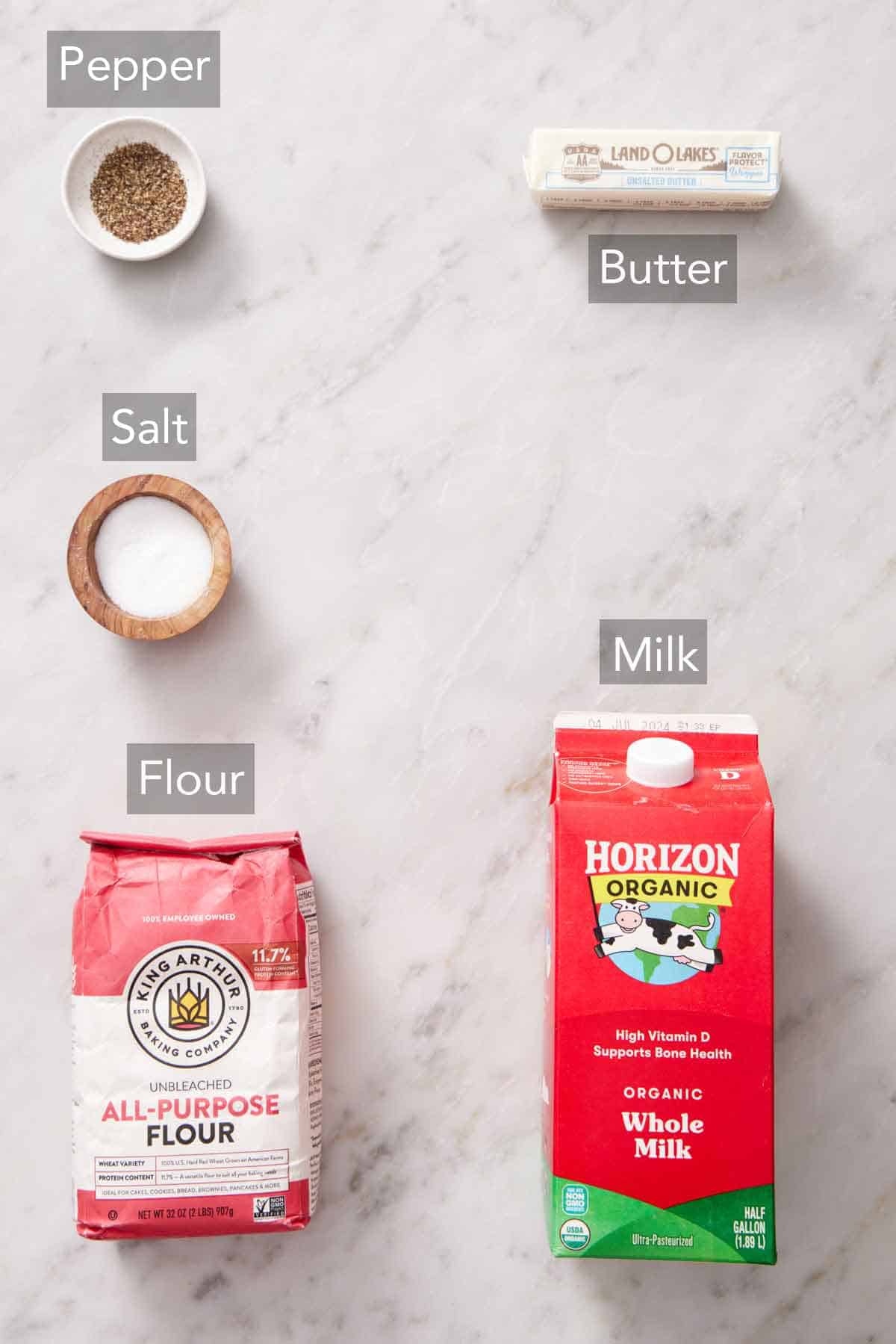
Unsalted butter — I have tested this recipe to work with both American and European-style butter. European butter will create a richer flavor with its higher fat content than American-style butter sticks, but both will make a delicious, creamy sauce.
All-purpose flour — plain white flour is cooked in the butter to create the white roux. This is what thickens the sauce for its signature velvety texture.
Whole milk — fat is your friend here, so use whole milk for the best-tasting results and to ensure your sauce doesn’t split.
Salt & ground black pepper — these basic seasonings are all you need for a plain béchamel sauce. Feel free to swap in white pepper for a purely white sauce.
How To Make Béchamel Sauce
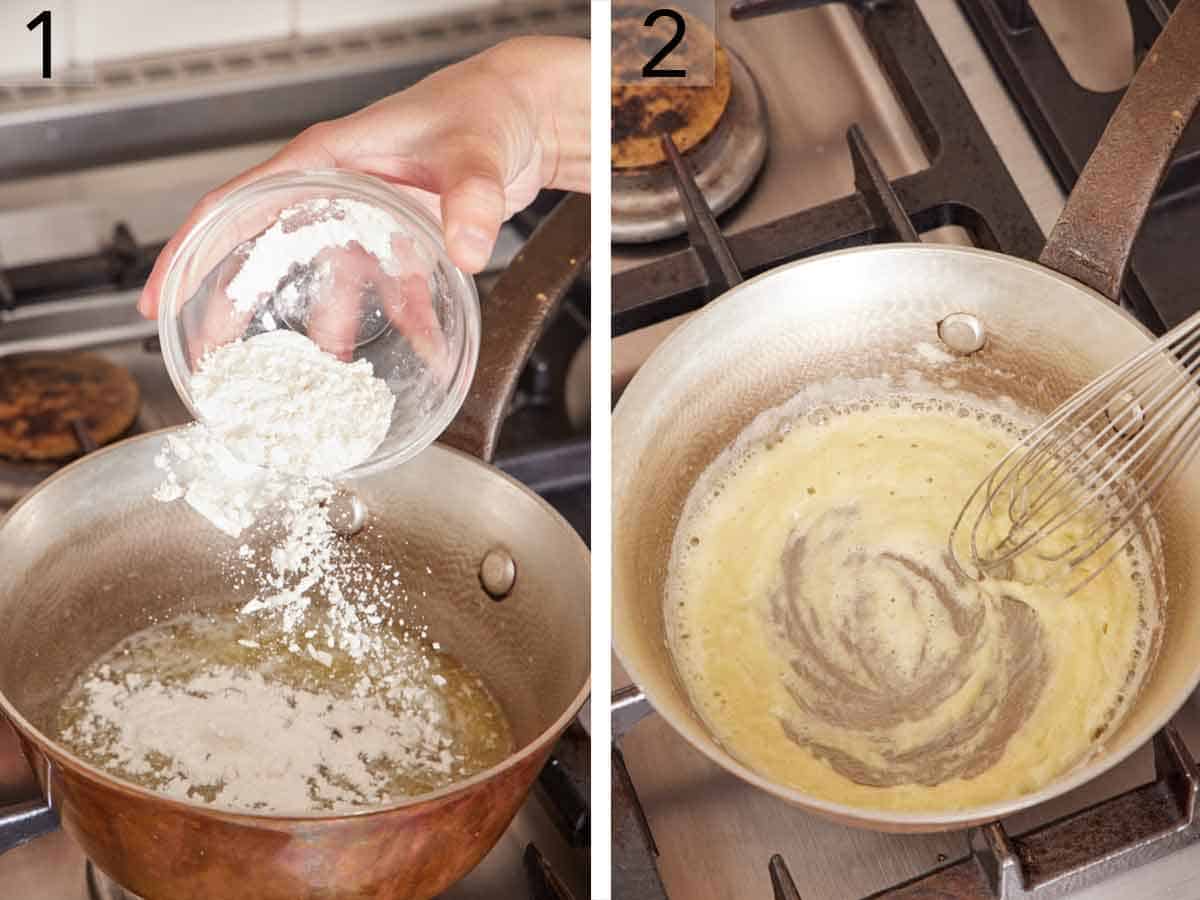
1. Melt butter in a small saucepan over medium heat until bubbling. Add 3 tablespoons of flour and reduce the heat to medium-low.
2. Whisk constantly for 30 seconds to 1 minute, until the mixture is light blonde in color. (You want to make a white sauce, so don’t cook it so long that it browns deeply.)
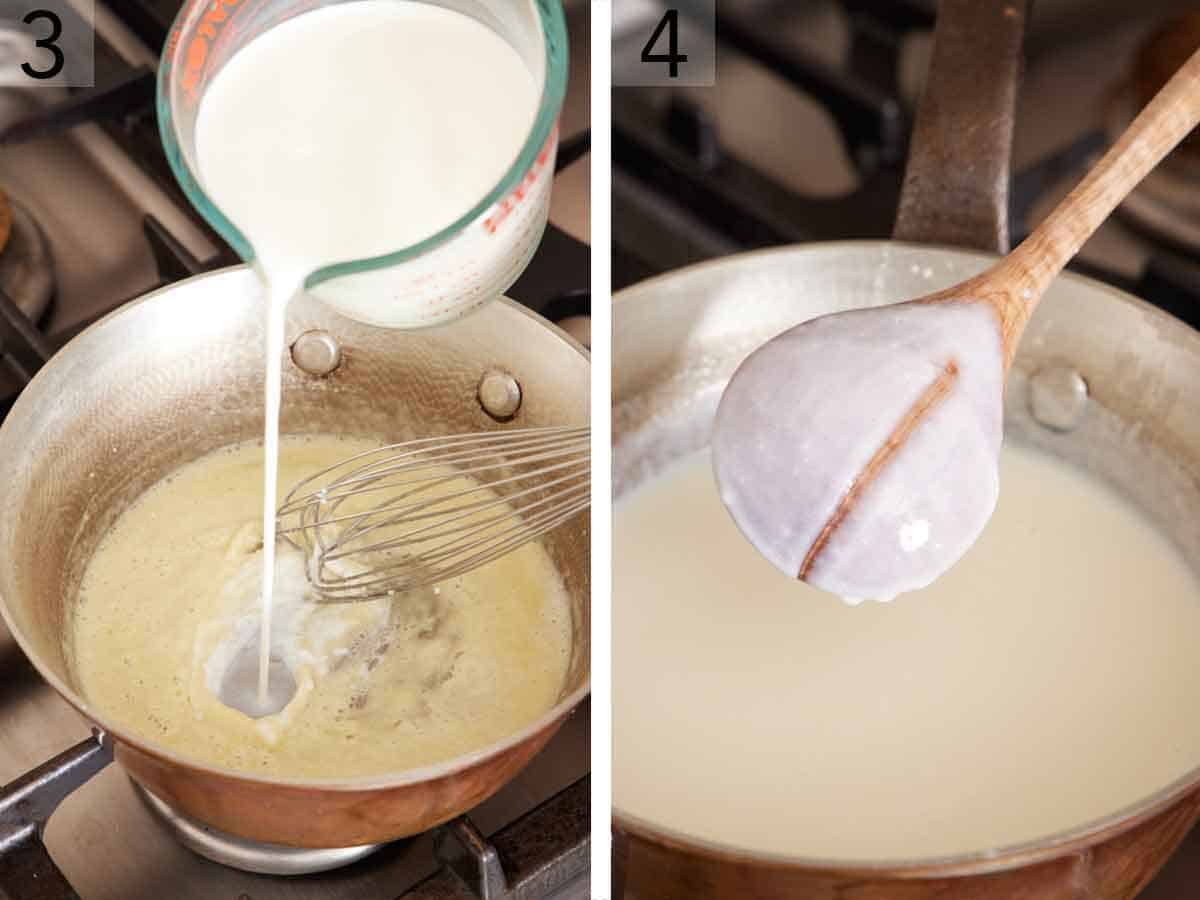
3. Slowly pour in the first cup of milk while whisking constantly. Add the second cup of milk and continue to whisk until the mixture is smooth. Cook over medium heat, whisking frequently to keep the sauce from sticking to the bottom of the pot, until the mixture bubbles and thickens.
4. Reduce the heat to low and continue to cook for 4 to 6 more minutes, whisking frequently, until the mixture coats the back of a wooden spoon. Stir in the salt and pepper. Taste the sauce and season it with more salt and pepper if needed.
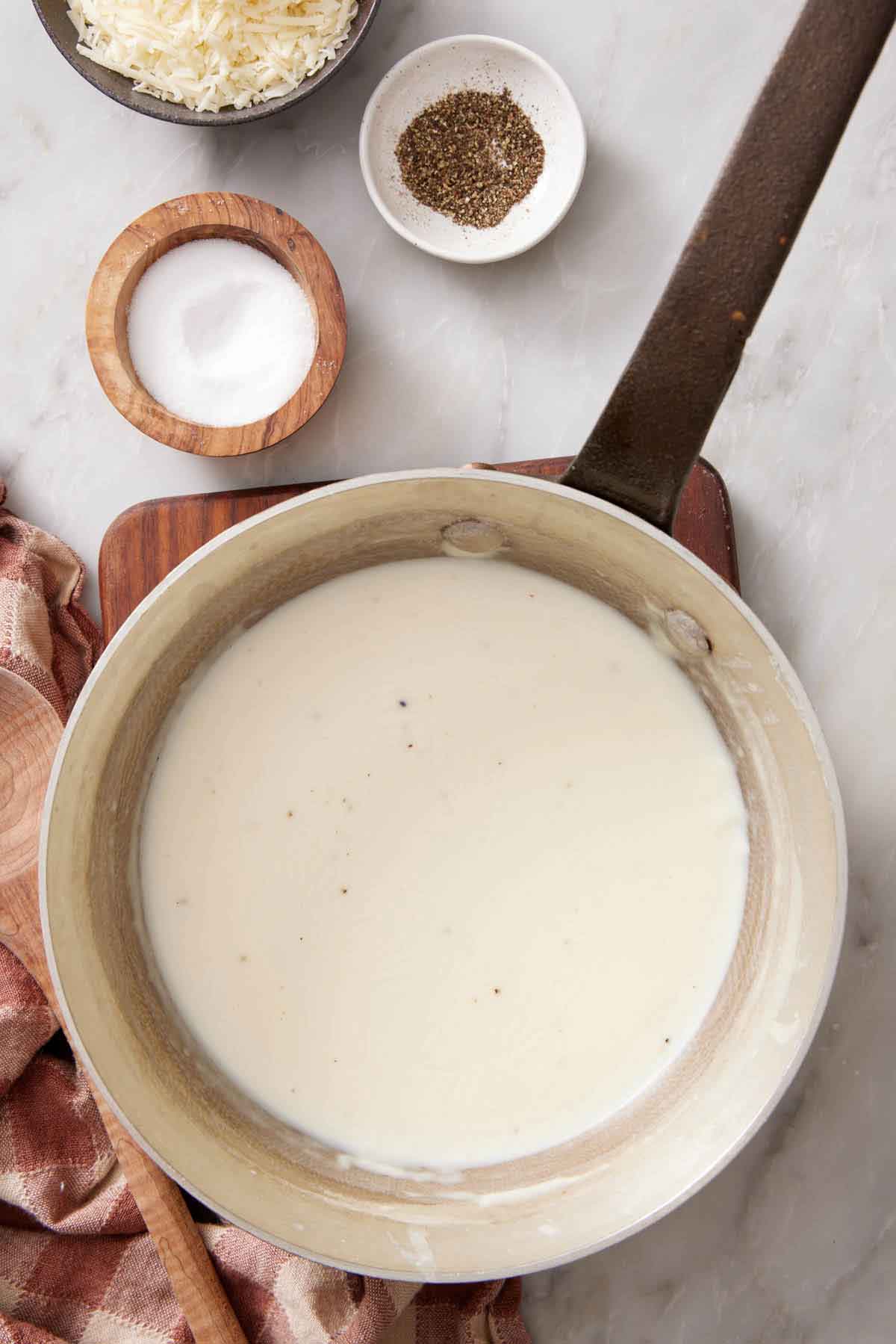
How To Adjust The Thickness Of Béchamel
The amount of milk you use will affect the end consistency. If your finished sauce is too thick for your needs, slowly whisk in a splash of milk. If it’s too thin, continue simmering it until it is thick enough.
My recipe makes a thinner, pourable sauce using a ratio of 1 tablespoon of flour per cup of milk. This is the perfect consistency for using in pasta dishes or potatoes au gratin. For recipes like Moussaka, you need a thicker bechamel, using 2 to 3 tablespoons of flour per cup of milk. (Note: If you add more flour, make sure to increase the butter by the same amount as well.)
Can I Flavor the Sauce?
Absolutely! There are lots of options:
- Add a pinch of nutmeg: This is a classic addition to Béchamel for many French recipes.
- Minced garlic: You can add it when you’re making the roux. Or, you can wait to add it at the end for a sharper, spicier garlic flavor.
- Add chopped fresh herbs like parsley, rosemary, or thyme, depending on your recipe. 1 to 2 teaspoons will flavor this recipe nicely.
- Fold in cheese: ½ to 1 cup of shredded or grated cheddar, parmesan, or your favorite meltable cheeses add delicious flavor! Technically, this ingredient addition turns the sauce from a Béchamel into a Mornay—another one of the French mother sauces.
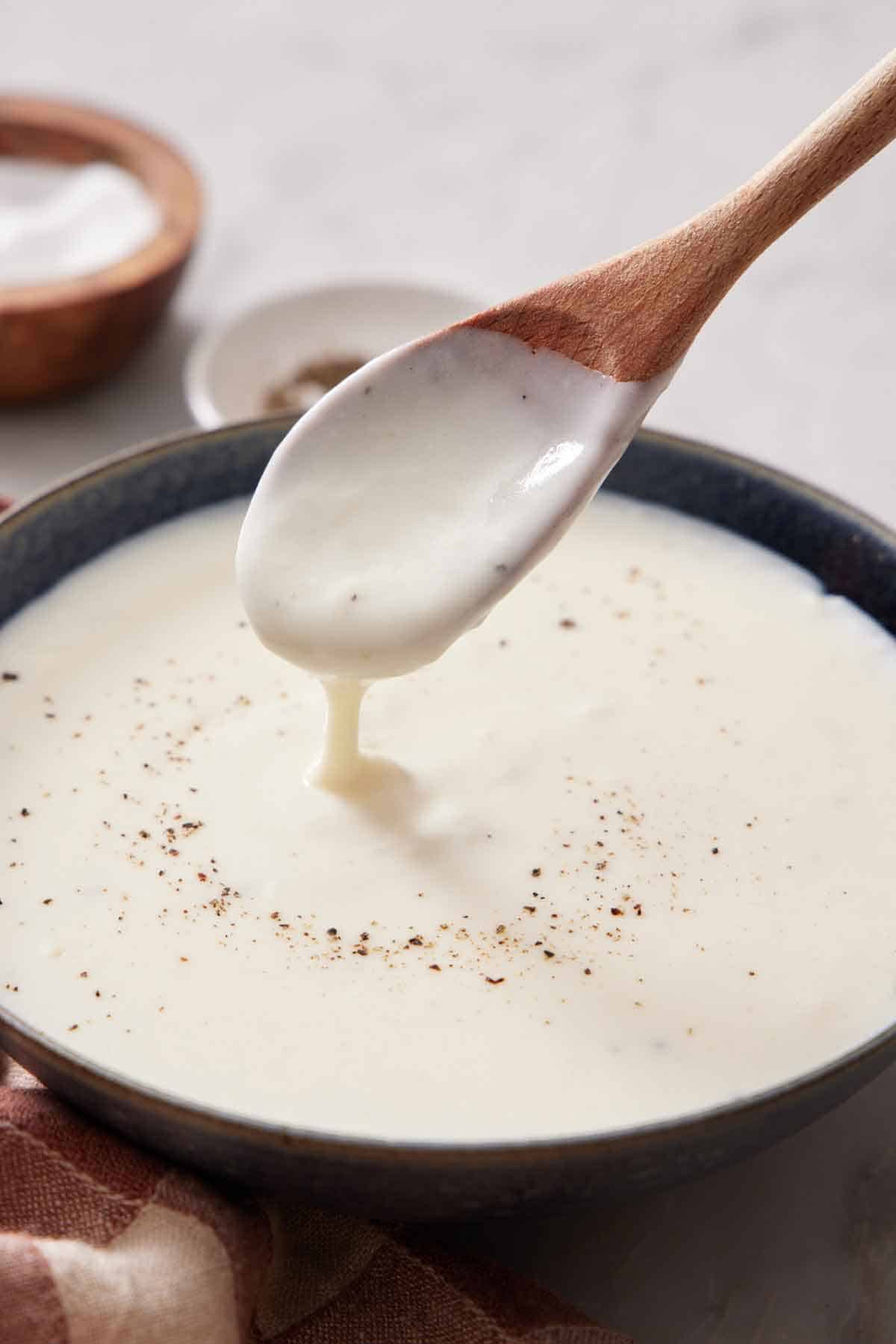
Ways To Use Bechamel
The reason bechamel is known as a “mother sauce” is that it is a foundation for making so many other recipes. It’s used as the base of sauces for homemade pasta, chicken lasagna, or baked mac and cheese. You can easily season it to use as a white gravy for chicken fried steak or as a shortcut for making biscuits and gravy.
You can also amp up the flavor by mixing in other ingredients. For example, try combining it with bolognese or marinara and use the creamy tomato sauce to make classic lasagna. Or, add nutmeg and parmesan, pour it over blanched vegetables, and bake it, like my cauliflower gratin. It also makes a lovely creamy base for your favorite pizza recipes!
Can I Make this Sauce in Advance?
Yes! Just make sure to press a piece of plastic wrap directly to the surface of the sauce to prevent a “skin” from forming and chill it for up to 48 hours. Slowly reheat in a saucepan over low heat while stirring constantly. Add more milk to thin it out if needed—it’ll thicken up a bit in the fridge.
Pro Tips for the Perfect Béchamel Sauce
- Don’t overcook the roux—it’s a white sauce, after all! We’re looking for a pale blonde color, just enough to make the flour taste nutty, not raw.
- Add the milk slowly while whisking constantly. The first little bit will make the roux clump a bit, so keep pouring as a steady, thin stream.
- Warm milk is better for incorporating into the roux. While the roux will clump a bit when the milk is first added, cold milk will make this much worse because it dramatically drops the temperature in the pan. The sauce will also cook and thicken more quickly if you start warm.
- Make sure the sauce coats the back of a spoon before you take it off the heat. Not sure what that means? Dip a spoon into the sauce, then lift it out. It should leave a coating, not immediately slide off. To test for thickness, drag your finger across the back of the spoon—the sauce should hold the line for at least a second or two before it starts dripping down to fill the hole. For a thick bechamel, the line should hold without filling in at all.
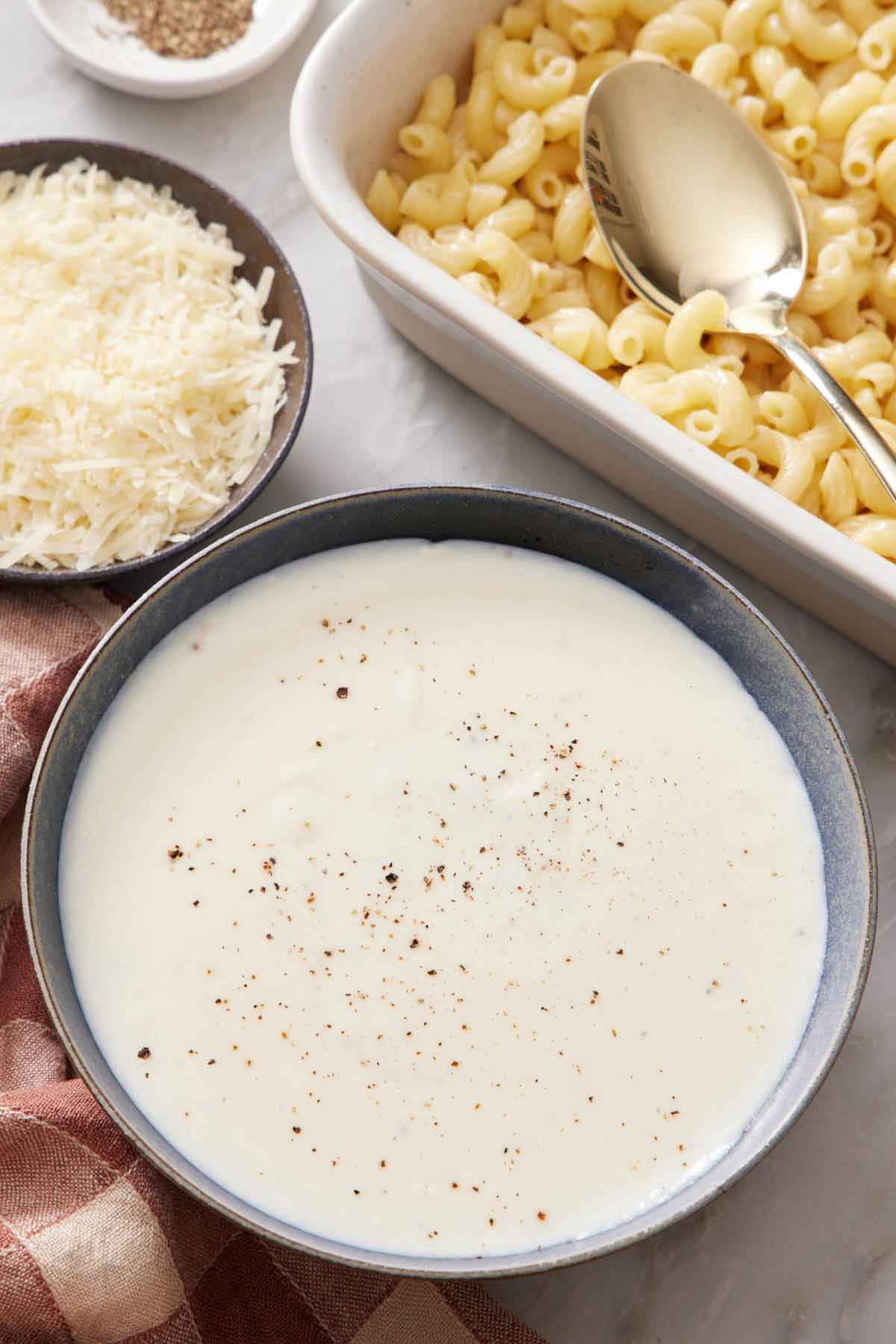
Frequently Asked Questions
Oops! Sounds like you got a little enthusiastic about adding the milk to the roux, pouring it in quickly rather than slowly incorporating it. To fix this, you can continue whisking vigorously until the lumps dissipate or use an immersion blender to break them up. If that doesn’t work, pour the lumpy sauce through a fine mesh sieve to remove the flour clumps and continue cooking the sauce until it is thick enough.
You can try using a gluten-free all-purpose flour blend—preferably one with xanthan gum or another emulsifier/thickener. I haven’t tested it, but it should work using the same method. You may need to add a bit of cornstarch dissolved in milk or water to thicken it, depending on the flour you use.
Yes, with a caveat—due to the high dairy content, frozen bechamel will break once thawed. After thawing it overnight in the fridge, gently reheat it on the stove (whisking continuously), then add another tablespoon of butter as you continue to whisk. The butter should act as an emulsifier and bring the sauce back together. If it doesn’t come together, try blending it on low to emulsify it again.
If you’ve tried this Bechamel Sauce recipe, then don’t forget to rate it and let me know how you got on in the comments below. I love hearing from you!

Béchamel Sauce Recipe
Equipment
- Medium Saucepan
Ingredients
- 3 tablespoons unsalted butter
- 3 tablespoons all-purpose flour
- 2 cups of whole milk (480mL) (warm or room temperature)
- ¼ teaspoon salt
- ⅛ teaspoon ground black pepper
Instructions
- In a medium saucepan, heat the butter over medium heat until melted.
- Add the flour and reduce the heat to medium-low. Whisk constantly for 30 seconds to 1 minute, until the mixture makes a light roux that is blonde in color.
- Slowly pour in the milk while whisking. Continue to whisk until the mixture is smooth. Cook over medium heat, whisking frequently, until the mixture bubbles and thickens.
- Reduce the heat to low and continue to cook for 4 to 6 more minutes, whisking frequently, until the mixture coats the back of a spoon.
- Stir in the salt and pepper. Taste the sauce and season with more salt and pepper to taste.
Notes
- Don’t overcook the roux—it’s a white sauce, after all! We’re looking for a pale blonde color, just enough to make the flour taste nutty, not raw.
- Add the milk slowly while whisking constantly. The first little bit will make the roux clump a bit, so keep pouring as a steady, thin stream.
- Warm milk is better for incorporating into the roux. While the roux will clump a bit when the milk is first added, cold milk will make this much worse because it dramatically drops the temperature in the pan. The sauce will also cook and thicken more quickly if you start warm.
- Make sure the sauce coats the back of a spoon before you take it off the heat. Not sure what that means? Dip a spoon into the sauce, then lift it out. It should leave a coating, not immediately slide off. To test for thickness, drag your finger across the back of the spoon—the sauce should hold the line for at least a second or two before it starts dripping down to fill the hole. For a thick bechamel, the line should hold without filling in at all.



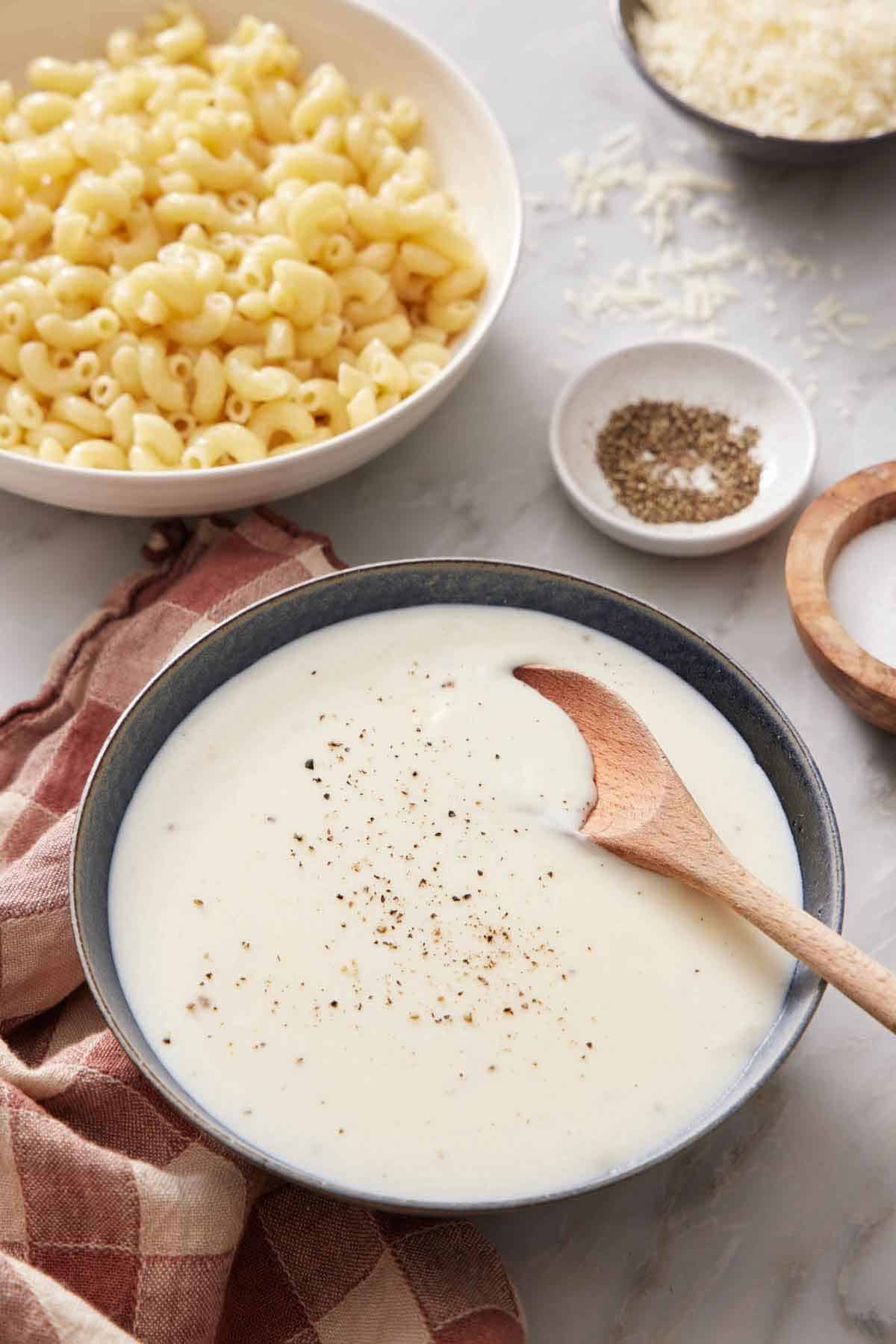
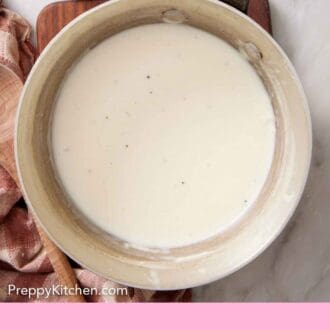






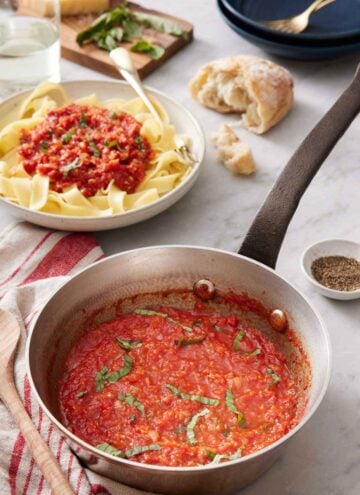



Puneet Prakash says
Very easy and simple recipe to execute